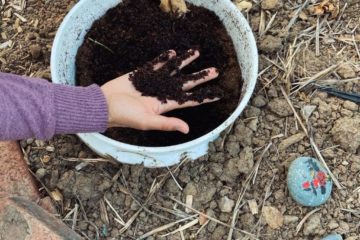Written by Alyla Phomphakdy, Landscape Design Intern
Recent data shows that 5.4 million Californians experience food insecurity (1). Food insecurity is defined as “the occasional or constant lack of access to the food one needs for a healthy, active life.” (2) This resulted in many community groups and organizations – such as Each Green Corner – to combat food insecurity in a variety of ways. One strategy we have combated food insecurity (and still do) is implementing food gardens within high schools. This specific approach has many benefits that coincide with it. Keep reading to find out more.
- Healthy and Fresh food for high school students
The first benefit of growing a food garden within a high school is – of course- high school students are able to grow and harvest their own fresh produce! High schoolers are able to control what chemicals or pesticides come into contact with their fruits and vegetables – if any. Having students grow their own food is also a great way to get them to eat more nutritious food as well as diversity their diet and palette.
2. Students learn about leadership, teamwork, and responsibility
Leadership
Offer students different roles of leadership throughout the garden- they will not only feel like they have invested time, effort, and energy into a fraction of the garden, but they will also have learned leadership skills! For instance you could assign one or several students to be in charge of watering plants while one or more focuses on trimming them back when needed. Being able to manage the life and care of a particular fruit, vegetable, or even section of the garden will teach them the importance of leadership.
Teamwork
As you grow your garden as a group, class, or club, high schoolers will learn to work together as a team. Pouring soil, distributing seeds, watering plants appropriately, understanding planting seasons, harvesting at appropriate times, and other hard work that comes along with caring for a garden takes a lot of working together. Caring for the garden is sure to create bonds amongst students and teachers (or supervisors) alike!
Responsibility
Understanding the needs of each particular plant takes a lot of patience and responsibility. Without the necessary understanding and effort to care for a plant, the chances of its survival in an urban setting are not very likely. A lot of responsibility is needed to care for a food garden to survive and thrive, thus it is an important and great way to teach students about it!
3. Community and friendship bonding
Working to care for a communal garden among the high school or even large group of high school students is a great way to have them get to know each other, form deeper connections, and relationships centered around empowerment. Having a garden for them creates a space for socialization and community strengthening.
Healthy foods, teaching students leadership, teamwork and responsibility, and community bonding are just some of the benefits that come with using high school gardens as a means of battling food insecurity. At Each Green Corner, we try to achieve these goals (among others) with the gardens we supportat high schools as well as those throughout the community.
Sources



0 Comments